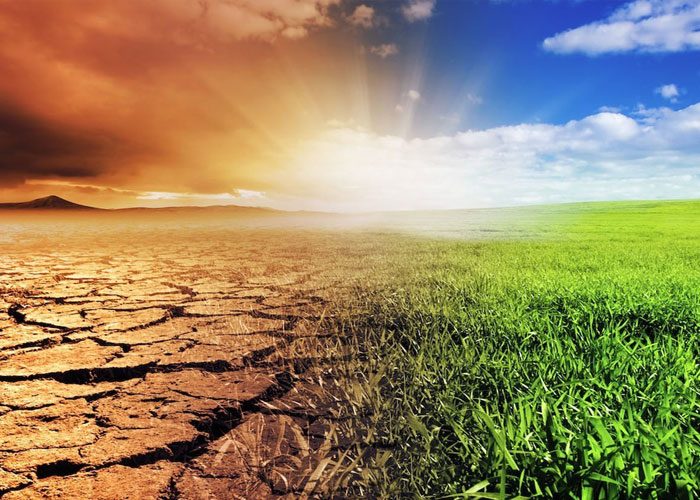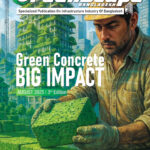Abstract:
Climate change is the consequence of development especially the infra-structure. Engineers are at the forefront of the development. Substantial reductions in greenhouse gas (GHG) emissions are possible to reduce the risk of climate change. A number of studies shows that nations can reduce their greenhouse gas emissions by 40-60 percent by 2050 through combining advanced energy efficiency approaches with low carbon technologies especially in this five fields: Decarbonising electricity generation, Energy efficiency in the use of electricity, More efficient vehicles, new fuels and demand containment in transport sector, Energy efficiency and new energy sources for heating & cooling and Technologies to drive emissions reduction. Substantial amount of GHG emission can be controlled giving due respect to the natural resource, indigenous technology and also by adopting advanced technology. Both mitigation and adaptation measures to be taken for effective and meaningful tackling strategy.
1.0 Introduction:
Bangladesh tops the list as potentially the most affected country by climate change. As one of the most affected countries by climate change, Bangladesh needs to devise ways to face the challenge urgently. Climate change affects the environment we live in, producing extreme weather events like cyclones, saline water intrusion, drought and floods. It is important to find means and ways to adapt and engineers have major role to play. Bangladesh has its culture of adaptation since independence through construction of embankment, afforestation, construction of cyclone & flood shelter, adopting saline & flood tolerant variety of rice and so on.
Climate change is the consequence of development. Now-a-days the term development itself means a sustainable development. Sustainable development accounts all the associated environment, disaster and climate change impacts. The adverse effects of climate change, such as rise in global temperature & sea level, increased frequency and intensity of extreme weather events, affect severely the 3rd world countries especially the poor people but the developed and underdeveloped countries are being responsible for climate change all over the globe.
We believe that substantial reductions in greenhouse gas emissions are required to reduce the risk of climate change and that the effects of climate change include reduced access to drinking water supplies, increased exposure to flooding and the threat to food security in large parts of Africa, Asia and Latin America. “Climate change is posing serious risks to the infrastructure systems that support our global economy, and more importantly, the ability of communities worldwide to prosper and thrive,” said ASCE President D. Wayne Klotz, P.E. “As civil engineers, it is our duty to assure the performance of those critical systems, and reducing greenhouse gas emissions and complying with the principles of sustainable development must play a major role in our efforts to mitigate the risks we face”.
Addressing mitigation, the commitment includes a call for leadership from the engineering profession in developing new technologies and materials, as well as a call to incorporate incentives for development and implementation of low or zero-greenhouse gas emitting technologies and cost-effective carbon capture and storage.
There are over 4000 brickfields in Bangladesh. Total annual production is about 12 billion which is considered to be the largest contributor to GHGs emissions in Bangladesh in the order of 3.0 million tones of CO2 emissions annually. Brick production is one of the most environmentally damaging activities in the industrial sector. It is one of the largest sources of greenhouse gas emissions in Bangladesh estimated to be in the order of 3.0 million tonnes of CO2 annually. Besides the air pollution, brick making industries contributes to 2 other serious environmental concerns: land degradation and deforestation. However hollow bricks that lower resource use and serve as good insulating material because of “air traps” in the perforations.
2.0 Energy Efficiency and Low Carbon Technology Opportunities:
A number of studies show that nations can reduce their greenhouse gas emissions by 40-60 percent by 2050 through combining advanced energy efficiency approaches with low carbon technologies. Each of the studies regards energy efficiency important, but all find energy efficiency alone is insufficient for large reductions. They also show there is a need to reduce the carbon emissions from energy production as well as through alternative fuels in the transport sector. These studies provide significant evidence that ‘halve greenhouse gas emissions’ is economically and technically achievable.
2.1 End‑Use Energy Efficiency:
- a) Hybrid cars and trucks:- At least 50% GHG reductions.
- b) Buildings: The energy efficiency of the structure of buildings can be improved by, on average, 45% through improvements in design and construction.
- c) Lighting systems: Using efficient compact fluorescent lights and installing movement sensors can improve the energy efficiency of lighting upto 70%.
- d) Residential sector: A 50% improvement in energy efficiency is possible based on uptake of moderate performance improvements.
- e) Turning off domestic appliances: 10% of household electricity is used by keeping appliances like TVs and video players on standby.
- f) Energy‑efficient street and traffic lighting: Street lighting and traffic signals can use a significant amount of energy, and by replacing traditional light fixtures with super-efficient bulbs and is possible to save upto 50%.
- g) Dimming and turning off unnecessary city lighting after 12am: 10% saving is possible such as automatically turning off lights of office buildings after 12am.
3.0 Reducing GHGs in Fossil Fuel Electric Power and Steam Generation:
Co‑generation: Co‑generation also known as combined heat and power (CHP) and total energy, is an efficient, clean and reliable approach to generating power and thermal energy from a single fuel source.
Tri‑generation: A tri‑generation plant is most often described as a co-generation plant that has added absorption chillers which take the ‘waste heat’ a co‑generation plant would have ‘wasted’, and converts this ‘free energy’ into useful energy in the form of chilled water.
3.1 Carbon Sequestration:
Below ground storage of carbon dioxide: By carbon sequestration it is possible to capture CO2 and 100% capturing is possible.
Coal gasification and carbon sequestration: Coal gasification also offers a realistic way to separate CO2and thus allows carbon sequestration.
3.2 Improving Conversion Efficiency:
Pulsed combustion: It is possible to develop the pulsed combustion technologies that can produce double thermal energy conversion rates.
Super-cables instead of traditional power cables: Being almost immune to resistance, superconducting power cables lose only about a 0.5% of power during transmission, compared to 5-8% lost by traditional power cables.
3.3 Decarbonising Electricity Generation – Renewables:
Renewables: Costs are consistently falling for renewable energy sources, such as mini-hydro, biomass, geo-thermal, tidal and solar power. Significant innovations are also occurring in harnessing energy from ocean waves and ocean currents. Wind Power in areas of high average wind is already cost competitive with coal-fired power stations. It can save energy upto 100%.
4.0 Sustainable Design Approach of building
Experts warn against the ill effects of built environments, estimating that about two thirds of global greenhouse gas emissions come from cities. Transportation and Building is the major contributor to GHG in cities. Buildings influence urban climate in five ways: by replacing vegetation, presenting blocky angular buildings, releasing artificial heat, disposing rainfall rapidly and by emitting contaminants. All these cause the urban heat island effect. The building materials employed in the construction of a building determines the heat that it absorbs, reflects and, distributes to the surroundings.
Sustainable building is a general term that describes environmentally-conscious design and construction techniques. In the broad context, it seeks to minimize the negative environmental impact of buildings by enhancing efficiency and moderation in the use of materials, energy, and development space. Simply, the idea of sustainability, or ecological design, is to ensure that our actions and decisions today do not inhibit the opportunities of future generations. From holistic approach it needs to consider:
4.1 Sustainable energy:
4.1.1 Heating, Ventilation and Cooling System Efficiency:
The most important and cost effective element of an efficient heating, ventilating, and air conditioning (HVAC) system is a well insulated building. A more efficient building requires less heat generating or dissipating power, but may require more ventilation capacity to expel polluted indoor air. Significant amounts of energy are flushed out of buildings in the water and air. Site and building orientation have some major effects on a building’s HVAC efficiency. Low energy buildings typically have a very low surface area to volume ratio to minimize heat loss.
Windows are placed to maximize the input of heat-creating light while minimizing the loss of heat through glass, a poor insulator. In the northern hemisphere this usually involves installing a large number of south-facing windows to collect direct sun and severely restricting the number of north-facing windows. Certain window types, such as double or triple glazed insulated windows with gas filled spaces and low emissivity (low-E) coatings; provide much better insulation than single-pane glass windows. Trees are often planted in front of windows to block excessive sun in summer with their leaves but allow light through in winter when their leaves fall off. Evergreen plants are often planted to the north of buildings to shield against cold north winds.
In warmer climates where cooling is a primary concern, passive solar designs can also be very effective. Masonry building materials with high thermal mass are very valuable for retaining the cool temperatures of night throughout the day.
4.1.2 Renewable energy generation
4.1.2.1 Solar Panels:
Active solar devices help to provide sustainable electricity for any use. Electrical output of a solar panel is dependent on orientation, efficiency, latitude, and climate.
4.1.2.2 Wind Turbines:
Wind turbines can supplement power for a single building. A small wind turbine can be installed on a roof. Small-scale rooftop wind turbines have been known to be able to generate power from 10% to up to 25% of the electricity required of a regular domestic household dwelling.
4.1.2.3 Solar Water Heating:
Solar water heaters also called solar domestic hot water systems can be a cost-effective way to generate hot water for home. They can be used in any climate, and the fuel they use sunshine is free.
4.1.2.4 Heat Pumps:
Air-source heat pumps (ASHP) can be thought of as reversible air conditioners. Like an air conditioner, an ASHP can take heat from a relatively cool space and dump it into a hot place. However, unlike an air conditioner, the condenser and evaporator of an ASHP can switch roles and absorb heat from the cool outside air and dump it into a warm house.
4.2 Sustainable building materials:
Some examples of sustainable building materials include recycled wood, concrete (high and ultra high performance, panels made from paper flakes, sundry clay & earth, cork, coconut fibre, calcium sand stone, locally-obtained stone and rock, and bamboo, which is one of the strongest and fastest growing woody plants.
4.3 Waste management:
Waste takes the form of spent or useless materials generated from households and businesses, construction and demolition processes, and manufacturing and agricultural industries. Sustainable architecture focuses on the on-site use of waste management, incorporating things such as grey water systems for use on garden beds, and composting toilets to reduce sewage.
4.4 Water management: Rainwater harvesting and grey water reuses are some of the possibilities for reducing water demand.
4.5 Building placement:
One central and often ignored aspect of sustainable architecture is building placement. Although many may see the ideal environmental home or office structure as an isolated place, this kind of placement is often detrimental to the environment. They usually increase the energy consumption required for transportation and lead to unnecessary auto emissions. Careful mixed use zoning can make commercial, residential, and light industrial areas more accessible for those traveling by foot, bicycle, or public transit, as proposed in the Principles of Intelligent Urbanism.
It is important to note that certain sets of energy reduction features in a building compound back through the system to create a total energy reduction greater than the sum of the individual reductions. In the case of a typical commercial building:
– One set of features arises from reducing lighting energy demand, through: 1) building orientation, fabric and form; then 2) daylighting; then 3) windows, and finally from improving the energy efficiency of 4) artificial lighting.
– Another set of features arises from better managing external solar heat gain (and hence peak cooling load energy demand), through: 1) building construction, orientation and form; then 2) windows, then though reducing internal heat gains by improving the energy efficiency of equipment, such as; 3a) artificial lighting; and 3b) information and communication technologies; and managing 3c) occupancy, and finally from improving the energy efficiency of 4) HVAC systems.
– Some sets of features have an origin at the building but extend to external components. These sets arise from: a) using low embodied energy construction materials and recycled materials, which reduces the energy demand in the materials processing sector; b) providing facilities to encourage sustainable urban transport, which can reduce the energy consumption associated with low-occupancy automotive transport; and c) using Building Management Systems, which reduce energy demand in the energy sectors.
4.6 Building Construction, Orientation, Fabric and Form
Optimising the building form and orientation requires a reliable estimate of the local, year-round climate conditions, such as temperature, humidity, wind, sun exposure and rain conditions. Only through understanding these conditions can the building’s passive features be optimised.
4.7 Passive Design
Several features of building orientation, fabric and form can be used to take advantage of opportunities for passive (no-energy consumption) lighting, heating, cooling and ventilation, most of which are low-cost options if integrated in the earliest stages of design:
In hot climates, heat transfer through the roof can be minimised by painting the roof with a light colour, preferably white, or by painting the roof with heat reflective paint. Heat in the immediate surroundings can be minimised by minimising paved and concreted ground areas and thus minimising the ’heat island effect’.
4.7.1 Daylighting: Daylighting is the practice of bringing natural light into a building and distributing it to provide illumination. It reduces the reliance on artificial lighting and thus reduces energy consumption and energy costs, but can also increase undesired solar gain and undesired glare.
4.7.2 Artificial Lighting: Artificial lighting contributes to about 50 percent of electricity consumption in a typical commercial building. Lamp retrofits with energy efficient lamps are one of the most cost-effective activities to reduce energy consumption, improve energy efficiency and reduce greenhouse gas emissions in existing buildings.
4.8 Embodied Energy of Construction Materials
The average building contains tens of thousands of gigajoules of energy embodied in its construction materials. There are databases available that can assist in selecting materials with low embodied energies (and low life cycle cost). Table-1 summarises the embodied energy of some common building materials.
4.8.1 Embodied energy of common building materials
| Material | Embodied energy (MJ/kg) | Material | Embodied energy (MJ/kg) |
| Air dried sawn hardwood | 0.5 | Mild steel | 34.0 |
| Kiln dried sawn hardwood | 2.0 | Galvanised mild steel | 38.0 |
| Kiln dried sawn softwood | 3.4 | Zinc | 51.0 |
| Particleboard | 8.0 | Acrylic Paint | 61.5 |
| Plywood | 10.4 | PVC | 80.0 |
| Glued-laminated timber | 11.0 | Plastics (general) | 90.0 |
| Laminated veneer timber | 11.0 | Copper | 100.0 |
| Medium Density Fibreboard (MDF) | 11.3 | Aluminium | 170.0 |
| Glass | 12.7 |
4.8.2 Reduction of Embodied Energy
Cement: Substantial reductions in energy consumption within cement production can be achieved by:
– Burning alternative fuels.
– Extending cement with supplementary materials.
– Using low grade, low energy cements where possible.
– CO2 stripping from gas stacks.
– Developing CO2 neutral and geo-polymer type cement systems.
– Promoting carbonation of cementations materials.
Further reductions in energy consumption can be achieved by:
– Using cement that contains supplementary cementitious materials, such as fly ash.
– Using recycled aggregate.
Steel: Energy consumption in the production of steel can be reduced by about 60 percent to 12 GJ/t.
Timber: Timber has relatively low life cycle CO2 emissions because the CO2 released when timber is burned or biodegraded is equivalent to the CO2 absorbed while the tree was alive. The major CO2emissions arise from transport and harvesting. Life Cycle Assessment studies show that timber sourced from sustainably managed plantations has the lowest environmental impact of all typical construction materials.
4.9 Materials Reuse and Recycling
Reusing and recycling buildings at the end of their useful lives reduces the embodied energy in the new buildings by displacing virgin materials and can also reduce capital costs for new buildings. It is possible to use more than 60 percent of construction and demolition waste materials to be reused, recycled or salvaged.
Concrete: Un-set concrete can be ‘washed’ out and by removing cement, Sand and stone can be re-used. Set concrete can be crushed and recycled as aggregate for new concrete or road and fill.
Steel: Recycling reduces embodied energy by 70%. Electric arc furnaces produce reinforcing bar, mesh and sections from 100 percent steel scrap. Conventional blast furnaces can incorporate up to 30% steel scrap.
Aluminium: Recycling reduces embodied energy by 95% and it is 100% recyclable.
Bricks: Crush for backfill, aggregate and gravel.
Tiles: Crush for backfill, aggregate and gravel.
Conclusion:
Engineers are at the forefront of the development. Green House Gas (GHG) emissions responsible for global warming are the consequence of development and so called comfortable living. Therefore engineers’ especially building ones can play a vital role for tackling climate change. Climate change resulting from human activity is an extremely serious global threat. Building and Transportation sectors are the major sources of GHG emissions. Therefore Environmental action by the engineering sector is both cost-effective and can make a very large contribution to tackling the problem.
References:
- Sustainable architecture – Wikipedia, the free encyclopedia.
- Architecture – Adapting to climate change, Z.N. Ahmed
- Energy Transformed – National Framework for Energy Efficiency
- Climate Change, the Kyoto Protocol and Civil Engineering – Dr Stuart Parkinson








